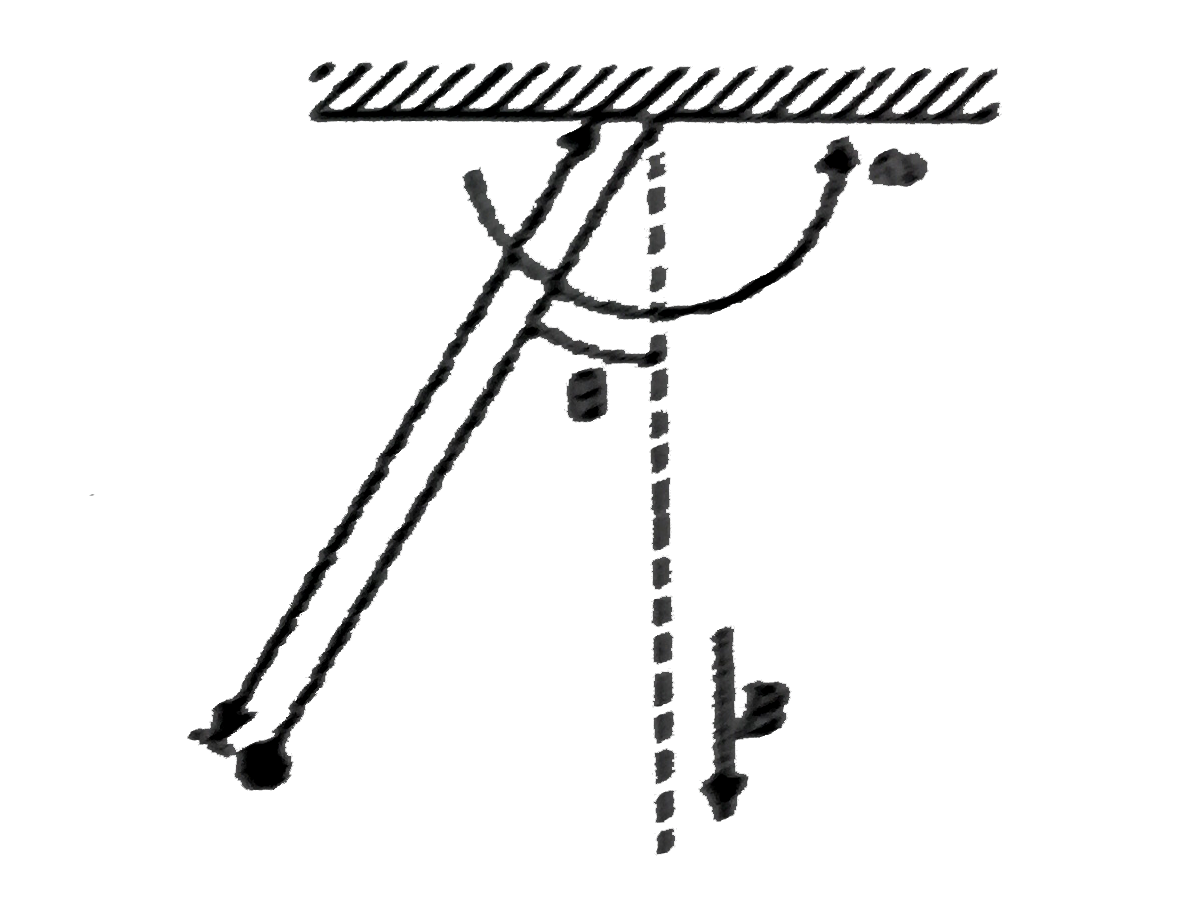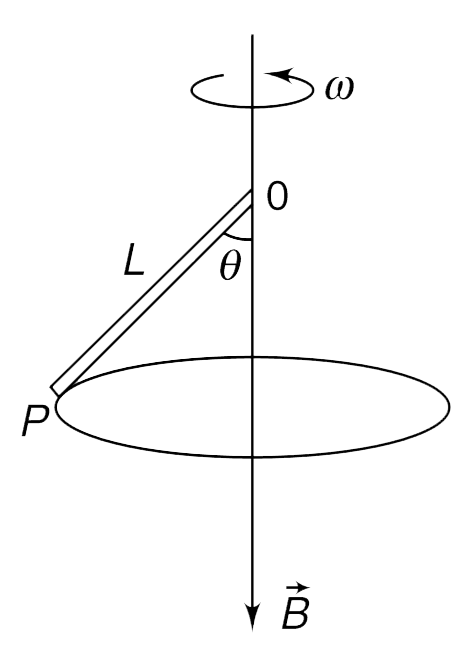A charged particle having its charge to mass ratio as β goes in a conical pendulum oflength L making an angle θ with vertical and angular velocity ω. If a magnetic field B is directed vertically downwards (see figure-4.238):

B=1β[ω−gωLcosθ]
Angular momentum of the particle about the point of suspension remains constant
If the direction of B were reversed maintaining same ω and L, then θ will remain unchanged
Rate ofchange of angular momentum of the particle about the point of suspension is not a constant vector.
Step by step video & image solution for A charged particle having its charge to mass ratio as beta goes in a conical pendulum oflength L making an angle theta with vertical and angular velocity omega. If a magnetic field B is directed vertically downwards (see figure-4.238): by Physics experts to help you in doubts & scoring excellent marks in Class 12 exams.
Topper's Solved these Questions
- BOOK - PHYSICS GALAXY - ASHISH ARORACHAPTER - MAGNETIC EFFECTS OF CURRENT AND MAGNETISMEXERCISE - U.N.P79videos
MAGNETIC EFFECTS OF CURRENT AND MAGNETISM
- BOOK - PHYSICS GALAXY - ASHISH ARORACHAPTER - MAGNETIC EFFECTS OF CURRENT AND MAGNETISMEXERCISE - Numerical MCQ61videos
MAGNETIC EFFECTS OF CURRENT AND MAGNETISM
- BOOK - PHYSICS GALAXY - ASHISH ARORACHAPTER - Kinetic Theory of Gases and Gas LawsEXERCISE - Unsolved Numerical Problems for Preparation of NSEP, INPhO & IPhO64videos
Kinetic Theory of Gases and Gas Laws
- BOOK - PHYSICS GALAXY - ASHISH ARORACHAPTER - NUCLEAR PHYSICS AND RADIOACTIVITYEXERCISE - Concptual MCQs48videos
NUCLEAR PHYSICS AND RADIOACTIVITY
Similar Questions
What is the force experienced by a charged particle of charge moving from east to west with a velocity v in a magnetic field B, acting vertically downwards?
View SolutionA copper rod of length l rotates an angular velocity ω in a uniform magnetic field B as show in figure . What is the induced emf across its ends ?
 View Solution
View Solution
Knowledge Check
- Question 1 - Select One or More
A charged particle of charge q and mass m is shot into a uniform magnetic field of induction B at an angle θ with the field. The frequency of revolution of the particle
ADepends on the angle θBIs independent of the angle θCIs proportional to the specific charge q/m of the particleDIs inversely proportional to the value of B - Question 2 - Select One
There is a ring of radius r having linear charge density λ and rotating with a uniform angular velocity ω. the magnetic field produced by this ring at its own centre would be
Aλω22−μ0Bμ0λ2ω√2Cμ0λω2Dμ0λ2ω2 - Question 3 - Select One
A charged particle enters a magnetic field B with its initial velocity v making an angle of π4 and B. The path of the particle will be
Aa straight lineBa circleCan ellipseDa helix
A conducting rod (OP) of length L rotates in form of a conical pendulum with an angular velocity ω about a fixed vertical axis passing through its end O. There is a uni- form magnetic field B in vertically downward direction. The rod makes an angle θ with the direction of the magnetic field. Calculate the emf induced across the ends of the rod. Which end is positive?
 View Solution
View SolutionA ring of mass m and radius R is given a charge q. It is then rotated about its axis with angular velocity ω.Find
(ii) Magnetic field produced at the centre of ring.View SolutionA particle is having mass m & charge +q is projected horizontally from point O. Electric field is present and is directed vertically downward .
View SolutionA charged particle enters a magnetic field H with its initial velocity making an angle of 45∘ with H. The path of the particle will be
View SolutionA pendulum bob of mass m charge q is at rest with its string making an angle θ with the vertical in a uniform horizontal electric field E. The tension in the string in
View Solution
